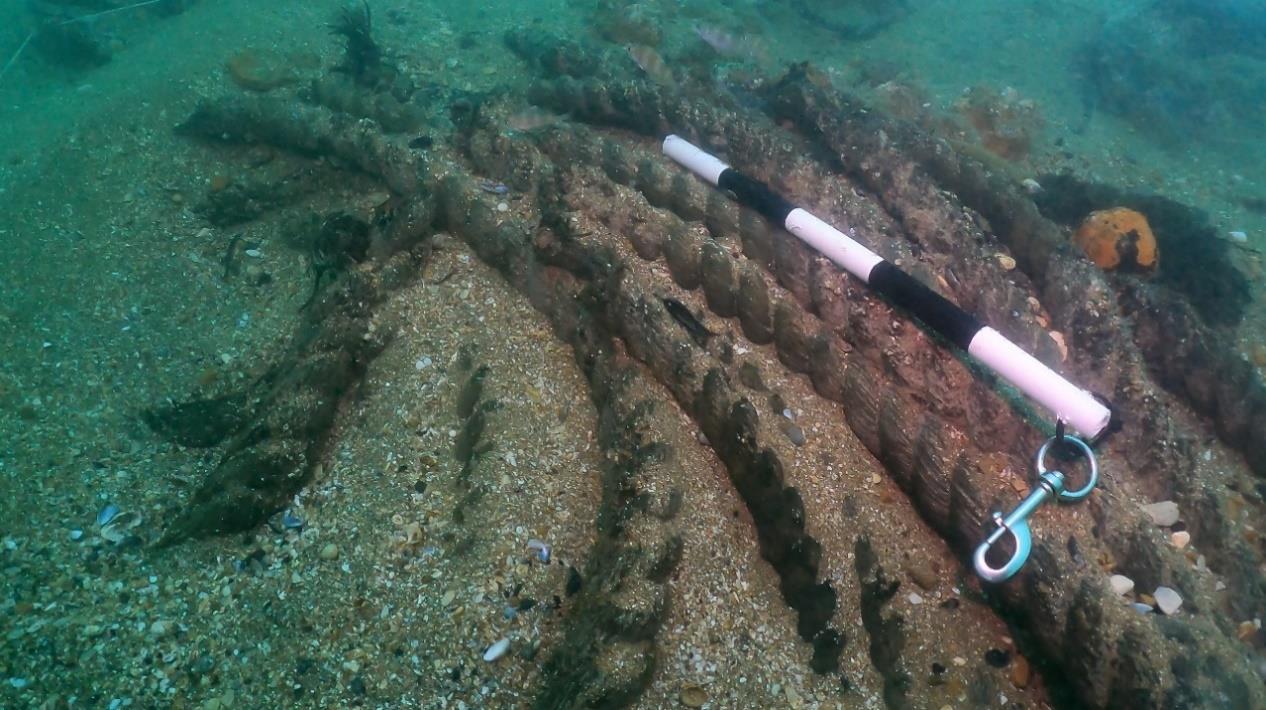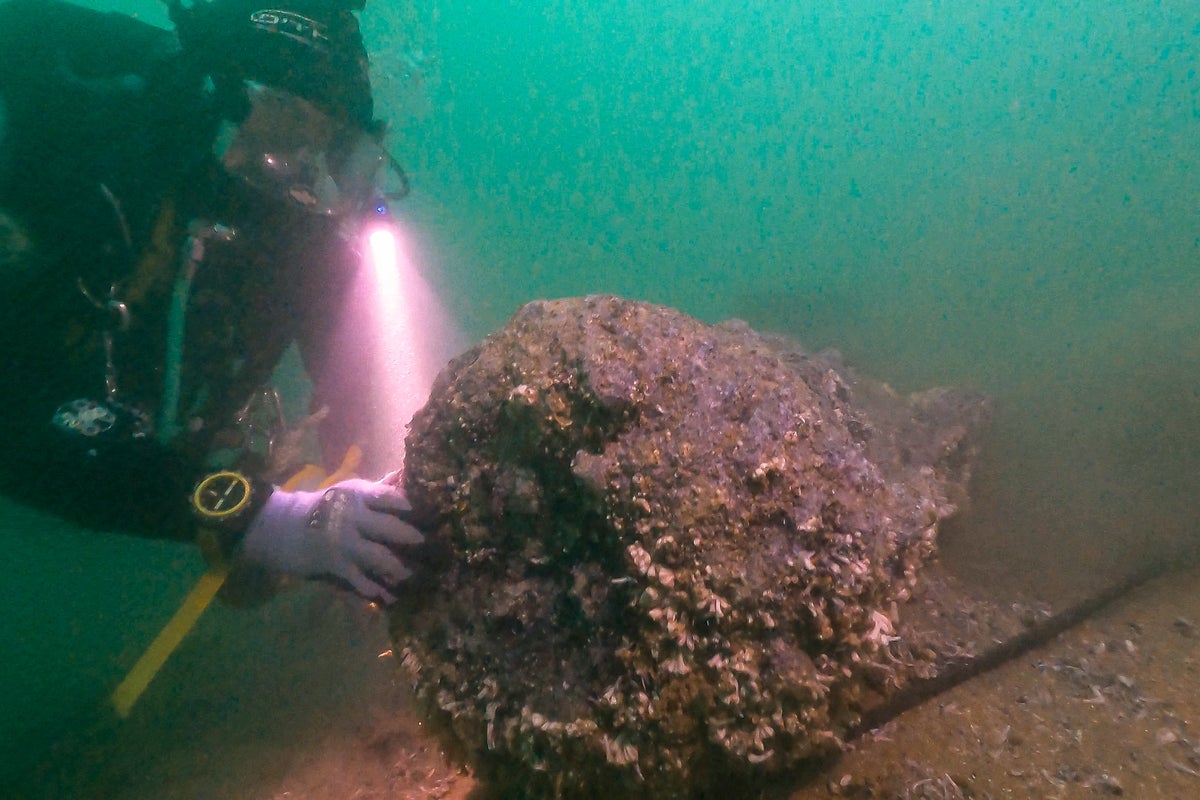The wreck of an “exceptionally well-preserved” 18th-century warship is revealing its treasures as shifting sands uncover its hull.
The Northumberland, which sank in 1703 during the ‘Great Storm’, has sat on the seabed off the Kent coast for 320 years. But divers have recently discovered well-preserved wooden chests, iron cannons, and copper cauldrons previously covered by sand and sediment.
Historians say the new finds could be “the missing link” to understanding more about shipbuilding during the Stuart period, but warned they are now at a “high risk of deterioration” as they become exposed to the elements.

The ship was built in 1679 as part of Samuel Pepys’ regeneration of the English Navy. It sank on 26 November 1703 on the treacherous Goodwin Sands, where it has lain ever since.
Divers have uncovered more of the skeleton of the ship than was previously thought to have survived, alongside evidence of multiple decks and part of a wooden gun carriage.
Dan Snow, Founder and Creative Director of History Hit, said: “Northumberland is THE missing link. Built roughly halfway between the Mary Rose and HMS Victory, this wreck can fill in crucial details of shipbuilding and life at sea at that pivotal moment in our history. We have the Mary Rose, the ‘Tudor time capsule’, well here’s a Stuart time capsule to sit alongside it.”

But experts from Historic England have said the moving sediment threatens to expose it to “physical, chemical and biological processes” that could damage the artefacts.
“Shifting sands, strong currents and wood-boring sea creatures, which burrow into and damage wooden structures on the seabed, continue to make this fragile Protected Wreck Site unstable, putting it at high risk of deterioration,” they said.
“It lies over a large area of the seabed between 15-20 metres deep and is covered by concretion or marine deposits; however, more of it is being exposed every day.”
-mov-101220-Still001.jpg)
Alison James, Heritage and Systems Manager at MSDS Marine, added the wreck “has so much potential to tell us more about the English Navy and ships of the period,” calling it a “rich resource for local communities to benefit from”.
Future work on the site may include taking wood samples or dendrochronological sampling to find out more about the ship’s construction and help confirm the ship’s identity, experts said.
It comes ahead of the release of history film ‘Shipwreck Northumberland and the Great Storm’ on Thursday 31 July.






